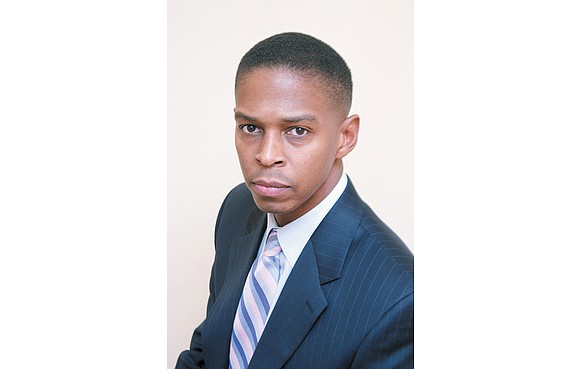Herring’s new policy seeks to eliminate cash bond system
Jeremy M. Lazarus | 5/4/2018, 7:13 a.m.
Richmond Commonwealth’s Attorney Michael N. Herring is stepping up his efforts to eliminate the cash bond system that forces people to stay in jail while awaiting trial because they cannot afford to put up the money or property for bail or to pay the fee of a bail bonding company willing to do it.
In his latest move, Mr. Herring confirmed Tuesday that he has directed the deputy and assistant prosecutors who handle most of the cases to stop recommending that people post cash or property to ensure their return for further court proceedings after being released.
“The new policy is to assess risk to the community and recommend hold or release, with appropriate conditions,” he stated Tuesday, meaning defendants would not have to put up money.
Mr. Herring said his office plans to monitor the results to make sure the policy does not result in more people failing to return for court hearings. That “would lead to recommending that more (people) be held,” he stated.
How many people would be affected is uncertain, but “I definitely expect more people to be released, bearing in mind that the judges have the final call,” he said.
And some judges prefer cash bail.
Mr. Herring’s new policy is more in line with the federal justice system where many defendants are released with conditions or on their promise to return for further proceedings.
Mr. Herring’s decision would mean more involvement by those accused of crimes with the Richmond Department of Justice Services, which currently conducts risk assessments of defendants for judges to use in determining whether they pose a risk for committing additional offenses if released.
The Department of Justice Services also provides pre-trial services for defendants released with conditions. As part of that work, the department advises on its website that it maintains close contact with individuals and also refers people to treatment, education or support services when a court makes that a condition of release.
Under the new policy, those who violate the conditions could have their release revoked by the court and be returned to jail to await trial.
First elected in 2005 and re-elected in November to his fourth term, Mr. Herring for some years has been experimenting with ways to make it easier for people who have not been convicted to remain free prior to trial.
He began looking at change after various studies during the past decade found that defendants released on their own recognizance were no more likely to miss future court appearances or re-offend than those released on cash bonds.
Mr. Herring, who started with a small program around 2010, made it more of a priority in 2014 after the city’s new jail, the Richmond Justice Center, was completed.
Then-Mayor Dwight C. Jones had rejected a recommendation for a 2,000-bed jail, opting instead for a smaller, less expensive jail with about 1,132 total beds.
A task force the mayor set up earlier began looking for ways to divert inmates from the new jail. Programs to divert mental health prisoners, people awaiting trial and low-level offenders were created and have proven relatively successful in keeping the daily population well below the average of 1,700 people who were daily sandwiched into the old jail.
Accompanying that effort, Mr. Herring, began a new policy of recommending increased release of accused people who previously would have been required to post bonds of $10,000 or less if an assessment showed they would not be a threat to the community.
Along with seeking to make money less of a factor, the new policy was seen as helping reduce the number of people stuck in jail while awaiting trial, he said at the time.
The courts don’t collect data on bonds, so Mr. Herring and other officials had no way to determine how well the program worked or how many people were released rather than placed on bond and how their rate of appearances in court compared with the appearance rate for those placed on a cash bond.
However, there also is no evidence showing the policy of increasing release without a bond requirement created problems for the courts or police.
“I never thought the $10,000 threshold was a validated measure of risk,” Mr. Herring said. “It was a step toward the binary system” in which people are either released or held depending on the assessment of their risk to the community.







